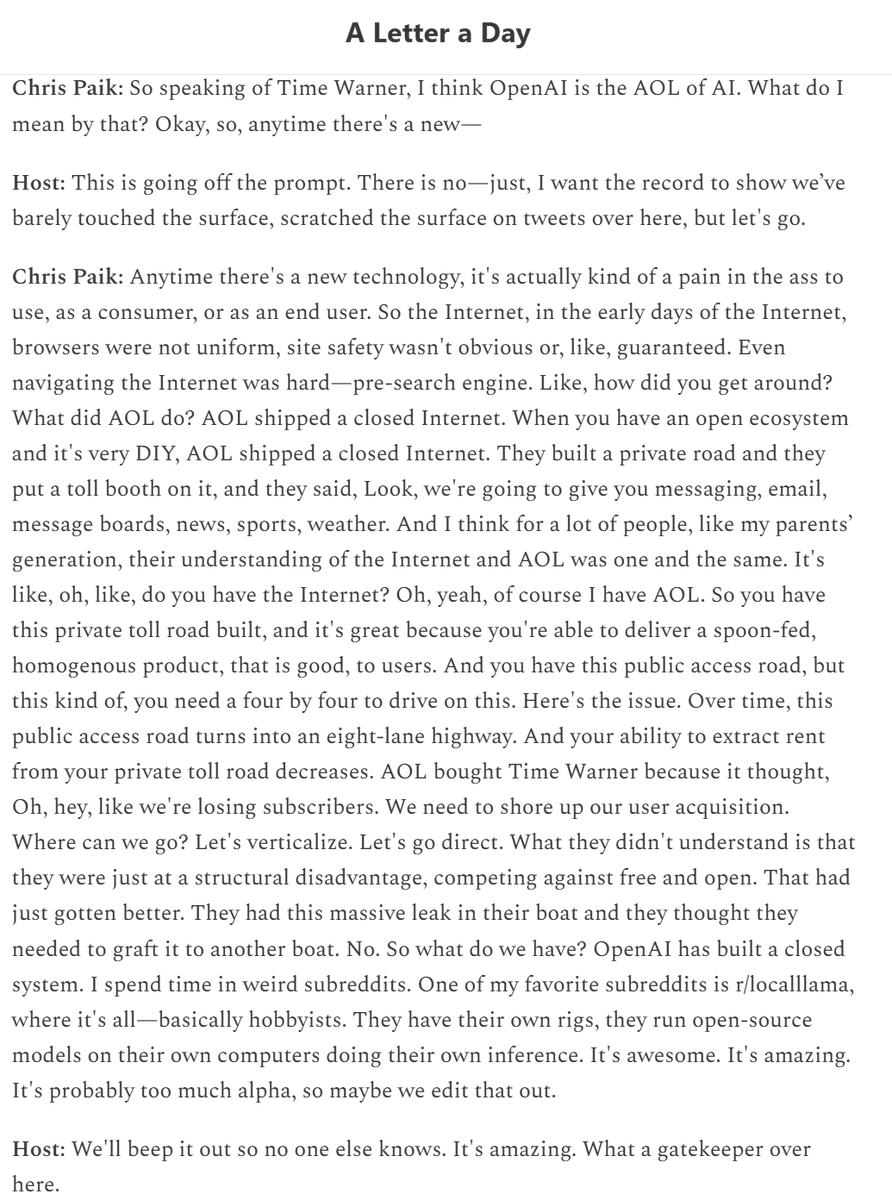Venture Capitalist Chris Paik Compares OpenAI's Closed System to AOL's Strategy

Kevin Gee recently highlighted venture capitalist Chris Paik's perspective, suggesting that OpenAI's current trajectory mirrors that of America Online (AOL) in the early internet era. Gee posted on X, stating, "> Every few months I think back to Chris Paik's take on why OpenAI is the AOL of AI." This comparison raises questions about the long-term viability of closed ecosystems in rapidly evolving technological landscapes.
Chris Paik, a General Partner at Pace Capital, has articulated concerns over OpenAI's business model, characterizing it as a "private toll road" and a "closed system." He suggests that OpenAI might eventually try to acquire distribution, much like AOL did historically. Paik’s critique implies that such a strategy could ultimately limit innovation and consumer choice in the burgeoning AI sector.
Historically, AOL dominated the early internet by offering a curated, user-friendly, but ultimately closed platform, which eventually struggled against the open web. Paik argues that a similar dynamic could unfold in AI, where open-source models and decentralized approaches, like those seen in communities such as r/localllama, represent a contrasting path. He believes that a closed strategy could lose its ability to extract rent over time.
OpenAI, initially founded as a non-profit, transitioned to a "capped-profit" model and has secured significant investments, including a reported $13 billion from Microsoft. The company, valued at over $500 billion, has also inked a five-year, $38 billion deal with Amazon Web Services. These partnerships underscore its aggressive strategy to consolidate its position as a leading aggregator in the AI space.
Adding to this sentiment, venture capitalist Tim Draper also drew parallels between OpenAI and AOL, noting, "OpenAI is the equivalent of AOL in the first internet wave." Draper’s comments, made in October 2025, suggest a growing concern among some investors about the potential for an AI hype cycle nearing its peak, with dominant players like OpenAI potentially facing future challenges if they fail to adapt to more open innovation.